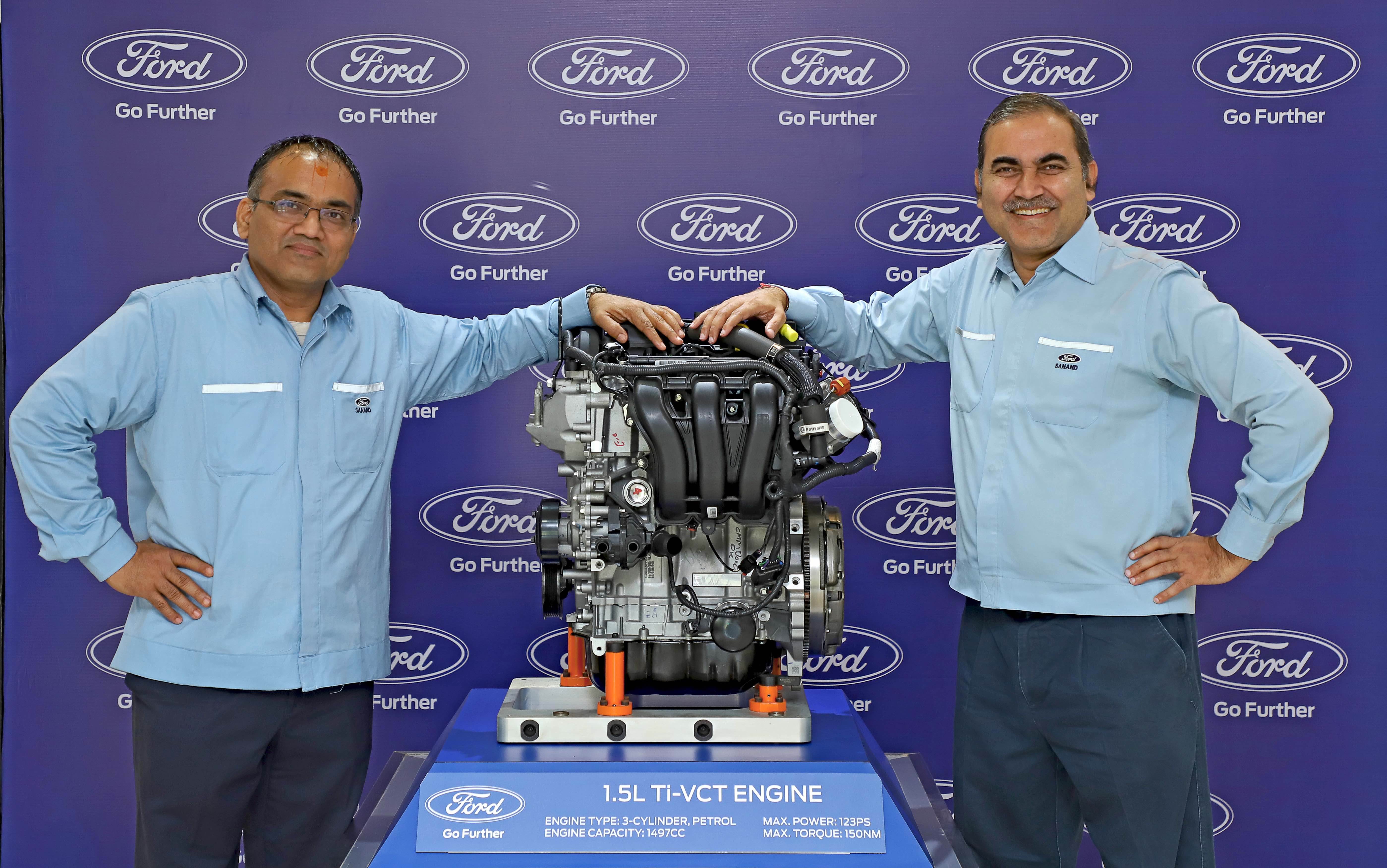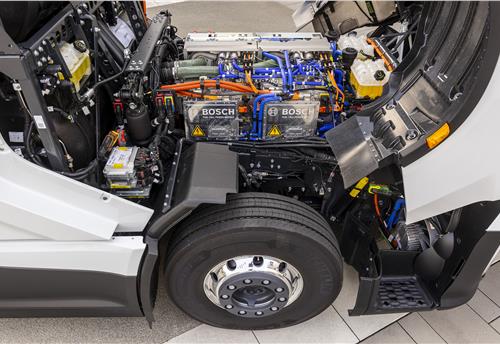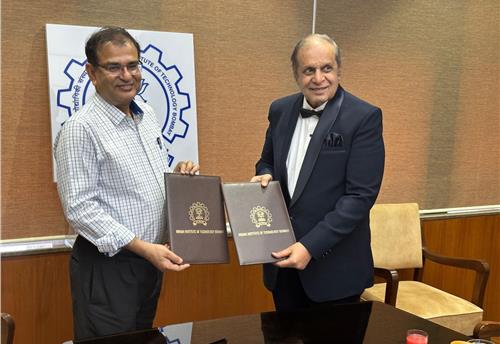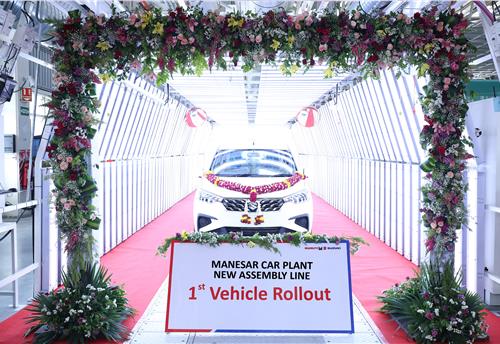Ford’s new engine of growth: made-in-India 1.5-litre Ti-VCT petrol
Ford India’s engine plant in Sanand to be the lead producer of all-new powertrain; over 80 percent parts sourced from Indian suppliers. Will debut on the facelifted EcoSport compact SUV for India.
Strengthening India’s credentials as a global manufacturing hub, Ford today revealed its all-new 1.5-litre, three-cylinder Dragon petrol engine which is to debut in the EcoSport compact SUV that's set to receive a facelift this month. The new engine, which will replace the 1.5-litre, four-cylinder engine in all models, can also run on 100 percent ethanol.
Manufactured at Ford’s integrated plant at Sanand, Gujarat, which has a production capacity of 440,000 units and 610,000 engines per annum, the new motor is built using an aluminium engine block and cylinder head, and an integrated exhaust manifold for improved refinement levels.
From the placement of the spark plugs and the crankshaft to sound-deadening enhancements, the new Dragon engine is said to be a huge improvement over the outgoing unit. As a result of the updates, the new 1.5-litre engine is expected to be lighter, more efficient and powerful.
The 1.5-litre Ti-VCT (Twin independent Variable Camshaft Timing system) motor develops 123hp and 150Nm of peak torque, which is 11hp and 10Nm more than the current four-cylinder engine's output. Ford also claims improved fuel efficiency to the tune of 7 percent over the outgoing 1.5-litre engine.

L-R: Anil Patel, Ford India engine plant manager, and Dhiraj Dixit, Ford Sanand plant manager, with the new 1.5-litre Ti-VCT, three-cylinder petrol engine which will be made for both the Indian and export markets.
Ford India’s engine factory will take the lead in manufacturing this new family of petrol engines, both for domestic production as well as global exports. Ford says its engineering team in India has steered the development of the new engine with key insights at every stage – from design, development to production. The engine will also have more than 80 percent parts sourced from Indian suppliers.
“Ford’s promise to give the power of choice to consumers in India today is not just limited to the world-class product portfolio. We are proud to offer some of the most efficient, and advanced powertrains – ranging from the 1.0-litre EcoBoost to the 5.0-litre V8,” said Anurag Mehrotra, president and managing director of Ford India.
Increased efficiency
According to Ford, along with improved performance, the 1.5-litre Ti-VCT engine will offer a seven percent reduction in CO2 emissions and a similar improvement in fuel efficiency, through reductions in weight and size, as well as the application of innovative technologies.
As a result of the engine being downsized from four cylinders to a three-in-line formation, the decrease in weight and lower friction are expected to deliver an overall 10 percent reduction in volume.
The aluminium engine block and cylinder head contribute to substantial weight reduction and better fuel economy. The exhaust manifold integrated into the cylinder head helps heat up the catalyst faster, decreasing emissions.
The variable oil pump can operate at a lower pressure at slower speeds with reduced friction loss, providing higher fuel economy.
Other optimised measures for better fuel efficiency include:
- Crankshaft off-set from cylinder centre line — improves both performance and fuel efficiency
- Centered spark plugs — promotes more standardised and efficient combustion
- Coil-on-plug system — delivers better combustion and quicker engine start
The Ti-VCT engine also benefits from optimised NVH levels aimed to deliver a quieter, smoother and more relaxing experience for occupants.
The engine’s balance shaft is supported by hydrodynamic bearings and works to eliminate natural first-order vibrations typical in standard three-cylinder engines. A belt-in oil primary drive system contributes to further reductions in both noise and friction. Other NVH improvements include valve actuation system with hydraulic lash adjusters and roller finger followers to reduce friction; and acoustic-isolation system that cuts down on engine noise.
“Ford is proud to be part of the automotive industry’s move towards lighter, cleaner, more fuel-efficient engines with uncompromised power performance,” said Anil Patel, site manager, Ford Sanand Engine Plant. “It’s a trend we’ll continue to apply to future Ford products.”
RELATED ARTICLES
Bosch hydrogen engine tech-powered truck to be on Indian roads this year
The global supplier of technology and services is betting big on both electromobility and hydrogen. While announcing the...
IIT Bombay inaugurates Arun Firodia Research Floor
IIT Bombay, one of India’s top technical and research institutions, honours Kinetic Group chairman Dr Arun Firodia, one ...
Maruti Suzuki expands capacity at Manesar plant by additional 100,000 units
New assembly line at Plant A expands total manufacturing capacity at the Manesar plants to 900,000 units per annum. Alon...





 05 Oct 2017
05 Oct 2017
 14422 Views
14422 Views





 Autocar Pro News Desk
Autocar Pro News Desk




